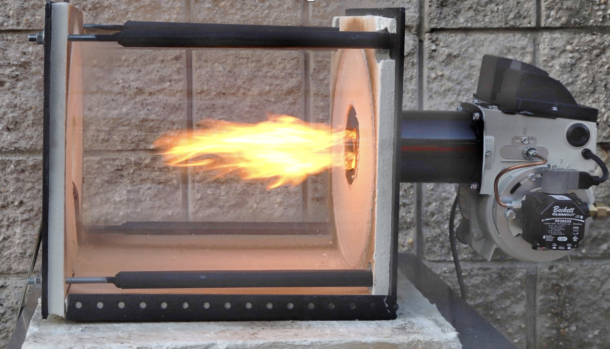Heating oil doesn’t have the market share of some of the other fuels, but it’s used in about 4.5 million homes in U.S. Most of these homes are concentrated in the Northeast, but heating oil is in use to some degree in almost every state in the country. And the heating oil’s market share has been shrinking over time in the face of climate change and a growing global awareness of environmental issues. The home heating oil industry is undergoing a remarkable transformation.
A quiet renaissance is taking place in the industry as communities, companies and individuals turn to a cleaner and more sustainable alternative to keep their homes warm during the cold winter months, while reducing their carbon output. That alternative is renewable liquid fuels. Electrification is often touted as the only decarbonization solution when there are many viable options, including renewable liquid fuels. Utilizing all options is the prudent approach to a worldwide problem of such immense scope.
The Need for Change: From Fossil Fuels to Renewable Liquid Fuels
For decades, homeowners have relied on traditional heating oil derived from fossil fuels to combat the chill of winter and provide abundant domestic hot water. However, with the environmental impact of these fuels becoming increasingly apparent, and with government mandates for carbon reduction, the need for a greener alternative has never been more pressing. Enter both biodiesel and renewable diesel—renewable energy sources that offer a solution to reduce carbon emissions and create a more sustainable future rapidly and economically.
The Rise of Renewable Liquid Fuels
Biodiesel, made from organic materials such as plant oils, animal fats or recycled cooking oil, is emerging as a game-changer in the heating industry. Unlike traditional heating oil, biodiesel produces up to 90% less greenhouse gas emissions, making it a cleaner and more environmentally friendly option. The shift toward biodiesel aligns with the global push for renewable energy sources and a reduction in dependence on fossil fuels.

Renewable diesel is derived from the same biomass feedstocks as biodiesel but undergoes a different production process. Renewable diesel is gaining popularity as a low-carbon alternative to traditional heating fuels. Unlike conventional fuel, which is derived from crude oil, renewable diesel significantly reduces greenhouse gas emissions and promotes a more sustainable energy future. Renewable diesel is in wide use in Europe for space and domestic water heating, particularly in the UK where renewable diesel incentives and mandates are upcoming.
During the transitional phase, renewal liquid fuels are commonly blended with each other and conventional petroleum. These blends are referred to as BXX, the XX representing the portion of renewable fuel. For example, B20 would be 20% biodiesel and 80% petroleum. Blends of biodiesel and petroleum are often referred to as Bioheat®.
Initiatives Leading the Way
Manufacturers, as well as national and state associations, are taking the lead in this transition. Forward-thinking fuel dealers and individuals are driving change from the ground up. These initiatives focus on producing new burners, appliances and accessories that are rated for renewable liquid fuels, education, outreach, and the development of infrastructure to support the adoption of renewable liquid fuels for home heating.
In many cases, these initiatives are not only reducing the carbon footprint of communities but also contributing to local economic development. Renewable liquid fuel production often involves repurposing waste materials, creating new jobs, and supporting local businesses engaged in the sustainable energy sector. Utilizing waste products from agricultural production helps both the American farmer and the economy.
How to Transition?
Most fuel dealers and homeowners don’t jump immediately from heating oil to 100% biodiesel, they slowly transition the blend level upwards over time. This slow transition makes it a non-event; the homeowner and technician observe no noticeable differences and no changes in equipment are needed. As filters, gaskets and other components are replaced over time, they should be upgraded to versions rated for use with biofuels.
The same holds true for appliances—when they reach the end of their lifespan or are upgraded for efficiency purposes, renewable fuel rated boilers and furnaces should be installed. The Inflation Reduction Act (IRA) recognizes the advantages of renewable fuels and authorizes a $600 tax credit for a new liquid fuel furnace or boiler rated for at least B20.
Success Stories: Homes Heated by Biodiesel
There are more than 300,000 companies and consumers that have already made the switch to B20 or higher blends, and are experiencing firsthand the positive impact on both the environment and their wallets. Jacqueline Hart, Executive VP of Hart Home Energy in Oakdale N.Y., remarked, “Our family began injection blending biofuel more than 20 years ago because we felt it was the right thing to do to decrease our dependency on foreign oil sources and to make the environment cleaner for future generations.
Since that time, we have increased our blends, participated in every local field study conducted in our area, and have used B100 in our own homes and business. We have seen a large reduction in service calls. The Hart Family remains committed to providing the cleanest and most sustainable carbonless fuel of choice for our customers and neighbors.”
These benefits require little to no upfront capital investment unlike many other decarbonization options and provide immediate carbon reduction, not at some future time as other solutions promise.
Challenges and Future Prospects
While the transition to renewable liquid fuels presents numerous benefits, it is not without some minor challenges. Infrastructure updates, technician education and public awareness are hurdles that the industry must overcome. However, as technology advances and support grow, these challenges are becoming increasingly manageable. Technician education will play a vital role in this transition. Just as some were resistant to PEX and PVC replacing copper and cast-iron pipe or press technology replacing sweat, there will be those opposed to this future fuel.
Looking ahead, the future of the home heating oil industry seems destined for a renewable rebirth. Governments, businesses and individuals are recognizing the urgency of addressing climate change, and the home heating sector is a crucial battleground in this environmental struggle. In the pursuit of a greener warmth, the transition to renewable liquid fuels is not just an industry shift, it’s a collective effort to preserve the planet for generations to come.
As communities unite in this endeavor, the home heating oil industry, soon to be renewable liquid fuel industry, is proving that sustainable choices can keep us warm and comfortable while protecting the world we call home.
Robert O’Brien is Director of Education, National Oilheat Research Alliance (NORA).



